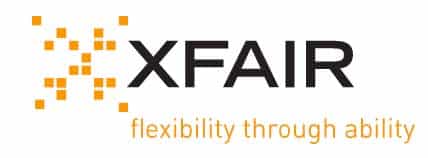Mr Knapp, can you start by explaining the basic function of online registration and how this is handled at XFAIR?
In principle, online registration is used to collect data online in the run-up to a trade fair or event so that the necessary information can be accessed and worked with both during the planning phase and during the trade fair itself. On the one hand, data collection is used for participant management – “Who is coming to an event and when?”. But it can also be used for invitation management. Invited participants can register here and then receive a confirmation email, with a QR code if requested by the customer, with which they can accredit themselves quickly and effectively on arrival at the event.
Furthermore, our stand management systems are filled with content through online registration, which is particularly advantageous at large trade fairs with large exhibition stands. This provides the staff at the information desk with the relevant information as required, such as who speaks which language, who is responsible for which product, or for which countries or regions, so that a visitor without an appointment or known contact person can be assigned the person responsible for them using these criteria values. An example: “I am looking for someone who is responsible for Belgium, who should speak Flemish and be responsible for printing machines.” We would then have stored this data in the system through online registration and can contact the relevant employee with just one click of the mouse.
Basically, online registration at XFAIR is a standard product that is customised for each customer. You can compare it a bit to a custom suit: I have a base that is then extended or adapted for the customer each time. The whole thing is usually designed in a layout that is based on our customer’s corporate design.
In terms of content, we can differentiate with regard to the event or the registration group during registration. This means that I can create several registration groups for one and the same event, in which different information is requested. For a trade fair, for example, there is often a registration group for stand service staff. Here, of course, I ask for different information than from the trade fair set-up team. If we take this example a step further, the latter group will also be on site at a different time, so I have to ask for different times. Just like a registration group of visitors, I would of course ask them other things and design the questionnaire differently to the employees of a trade fair stand.
The request for various information is also related to the selection of the modules. These can be activated as required by the customer. One of the modules is the ‘Hotel’ module, for example, if there is a need for hotel management. The ‘Meeting rooms’ module is also popular, with which I, as a participant, can book one or more meeting rooms advance and then have them assigned by an administrator with a confirmation e-mail. I can also activate the ‘Orders’ module, which a participant can use to order exhibitor passes or day tickets for his customers, which he can then hand over to them personally. Many exhibitors also use this feature to have their employees order workwear or trade fair uniforms etc. and thus can get the respective items of clothing in the right size and in the right size.
We have many other modules, for example the ‘guided tours’ module, in case our customers want to offer guided tours of their stands. There are also customers who use this tool to organise bus shuttles. The idea here is simple: I have a certain number of slots at a certain time and the module then automatically deducts a slot with every booking. This happens until there is no more space. Then this slot no longer appears in the online registration and can no longer be selected.
All these modules can be activated or deactivated in the various registration groups. For example, I can activate the hotel module in the Employees group, but deactivate it in the Visitors group so that visitors cannot request a hotel, but employees can. I can also activate or deactivate the modules at different times during a project.





